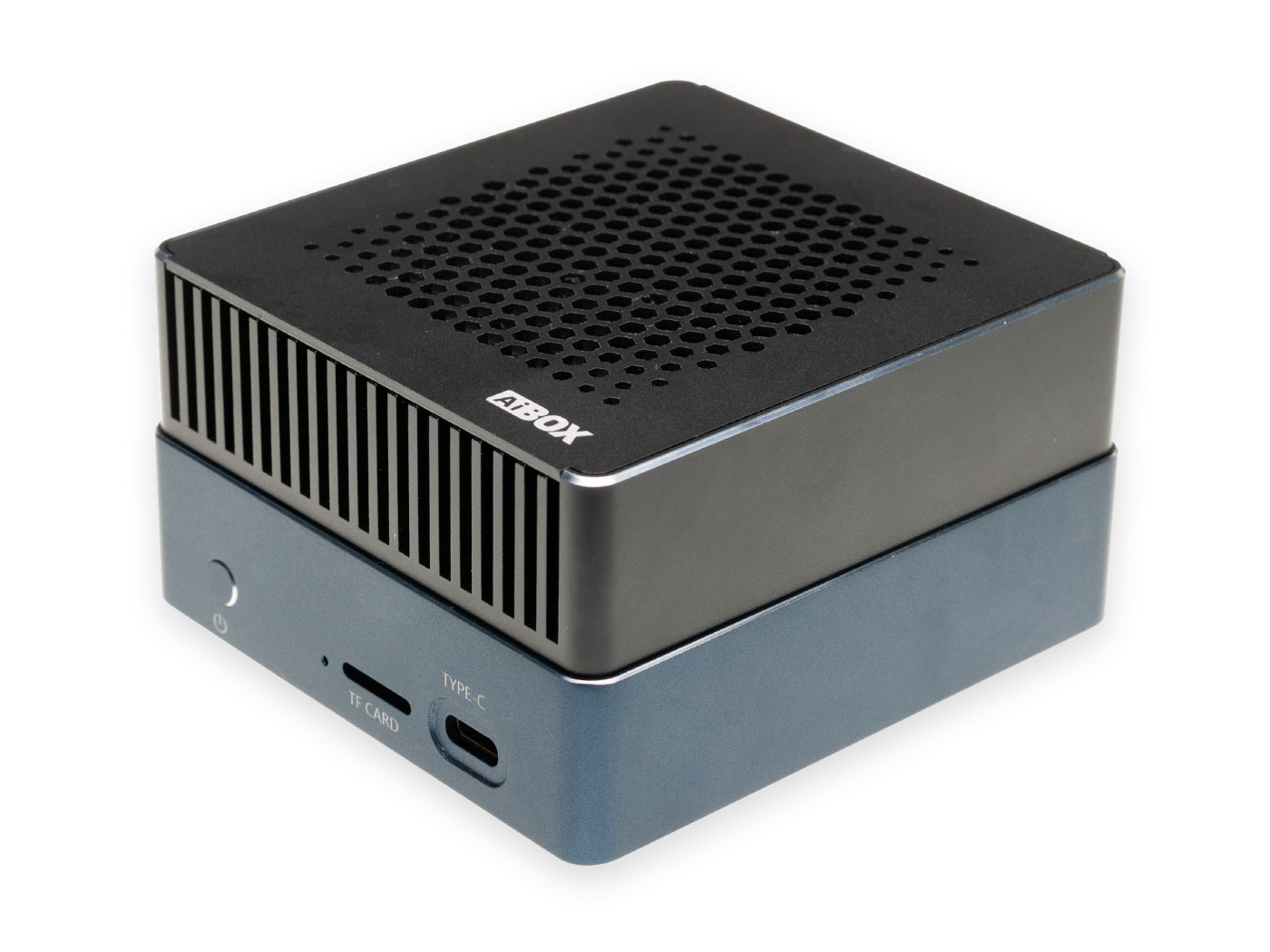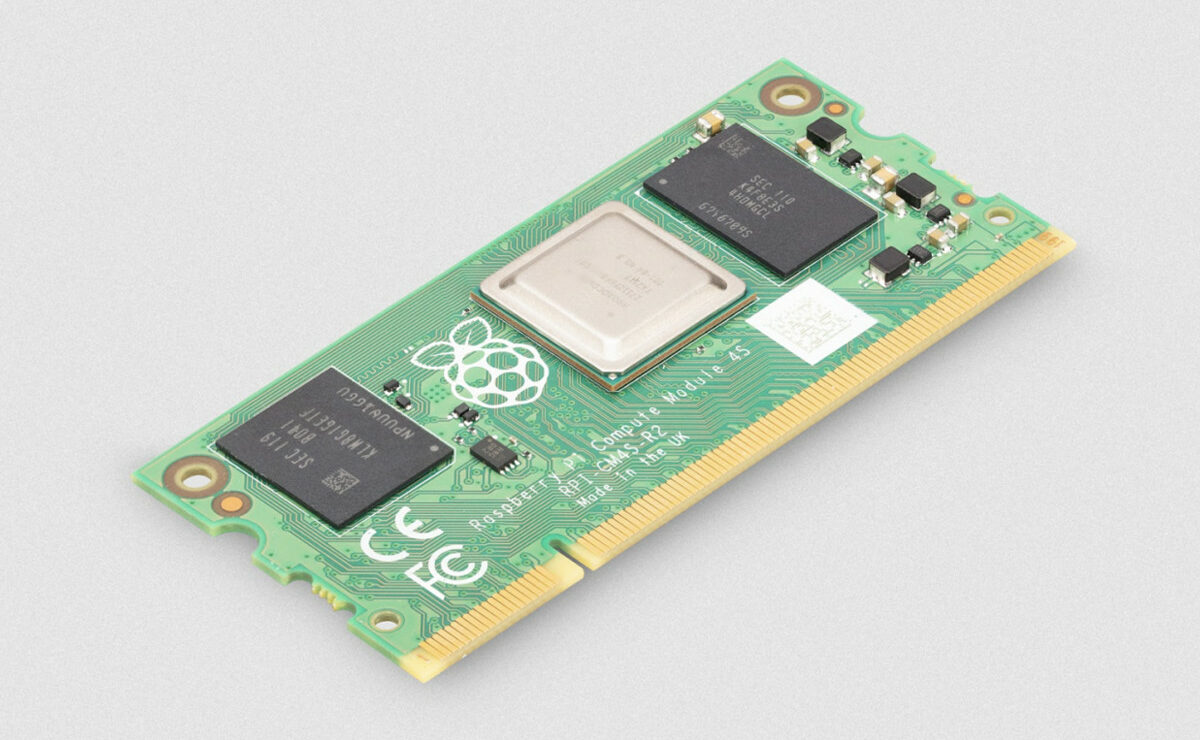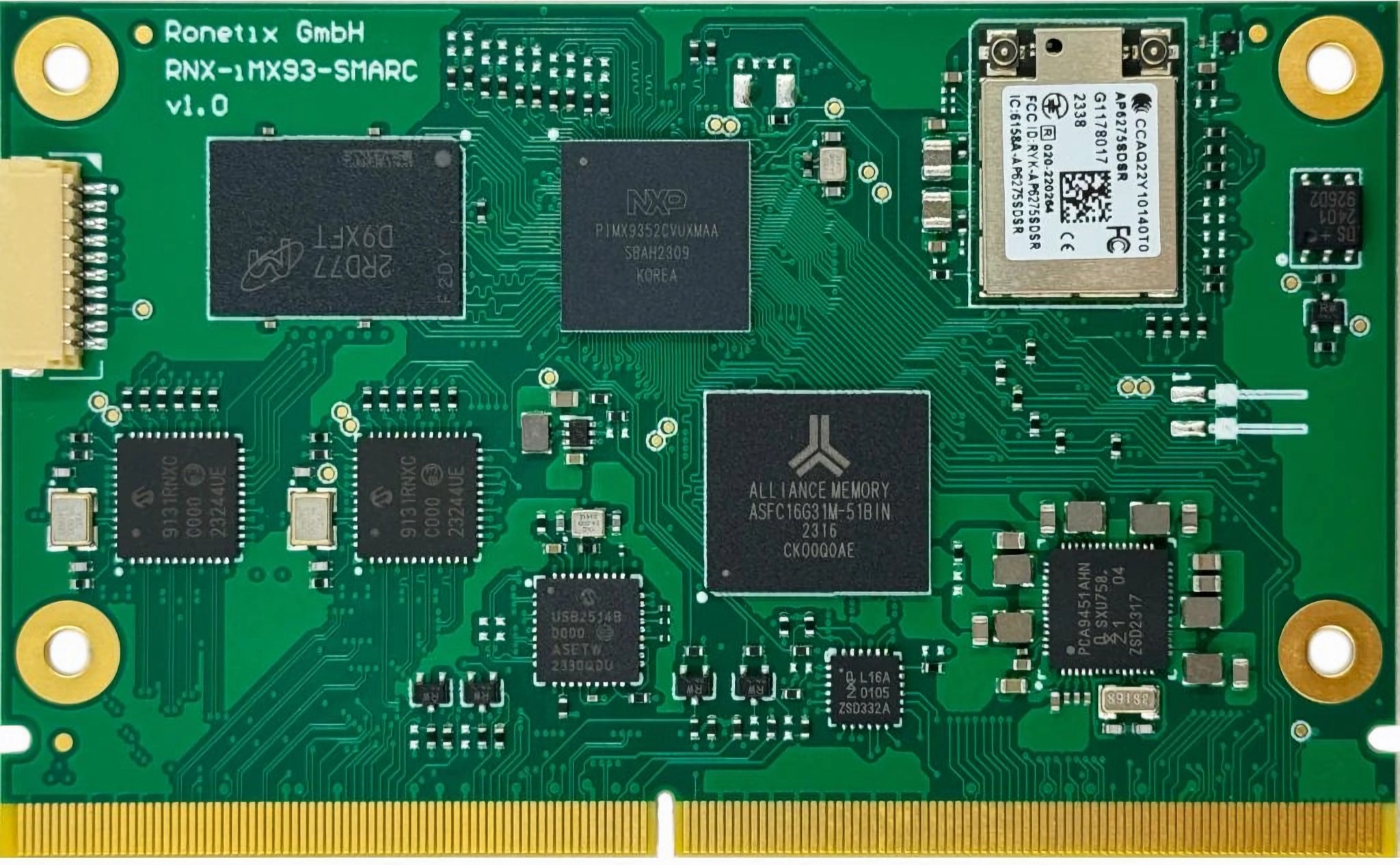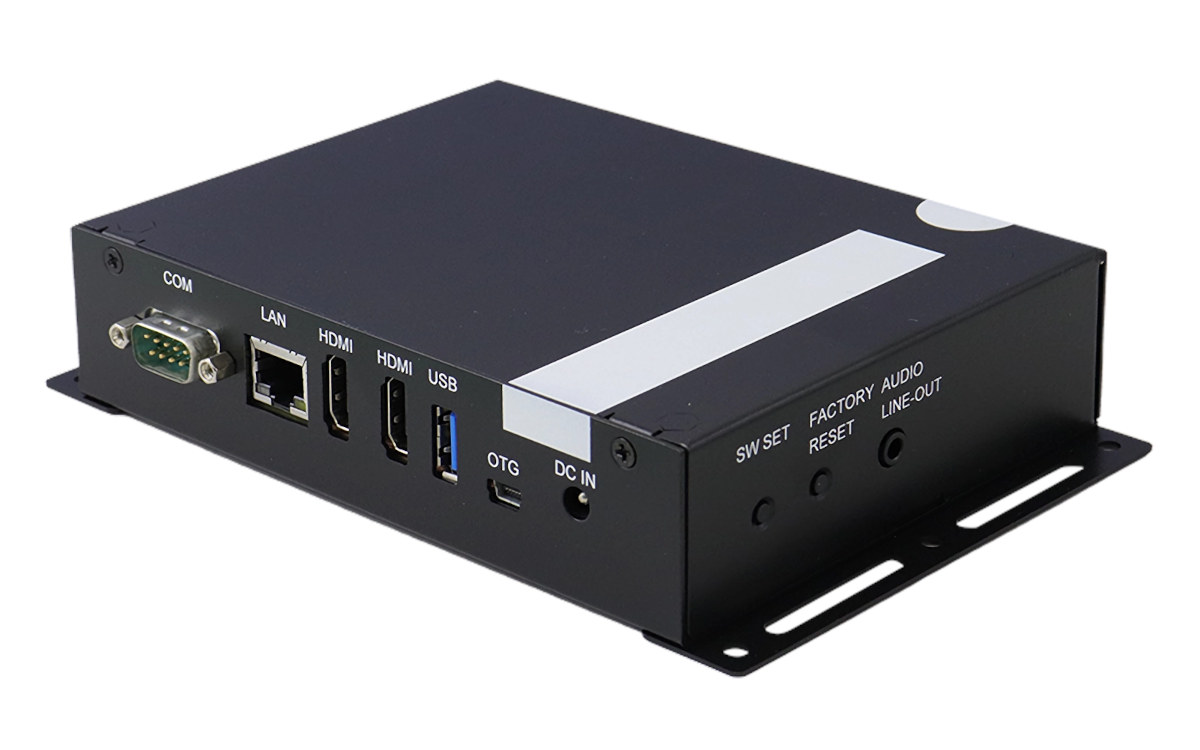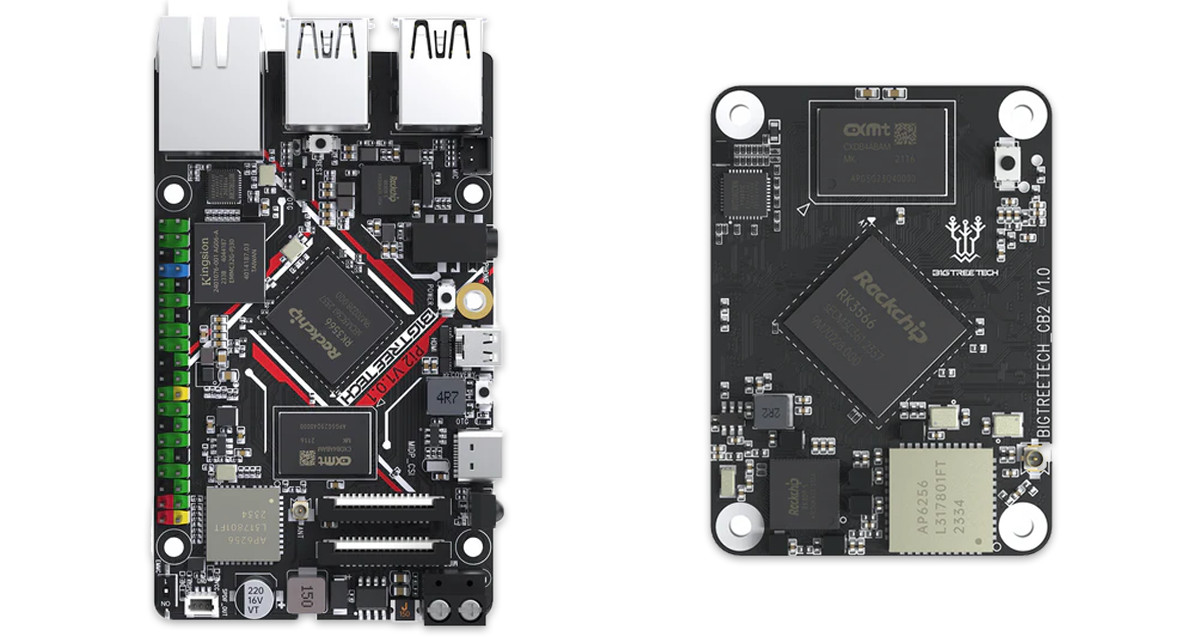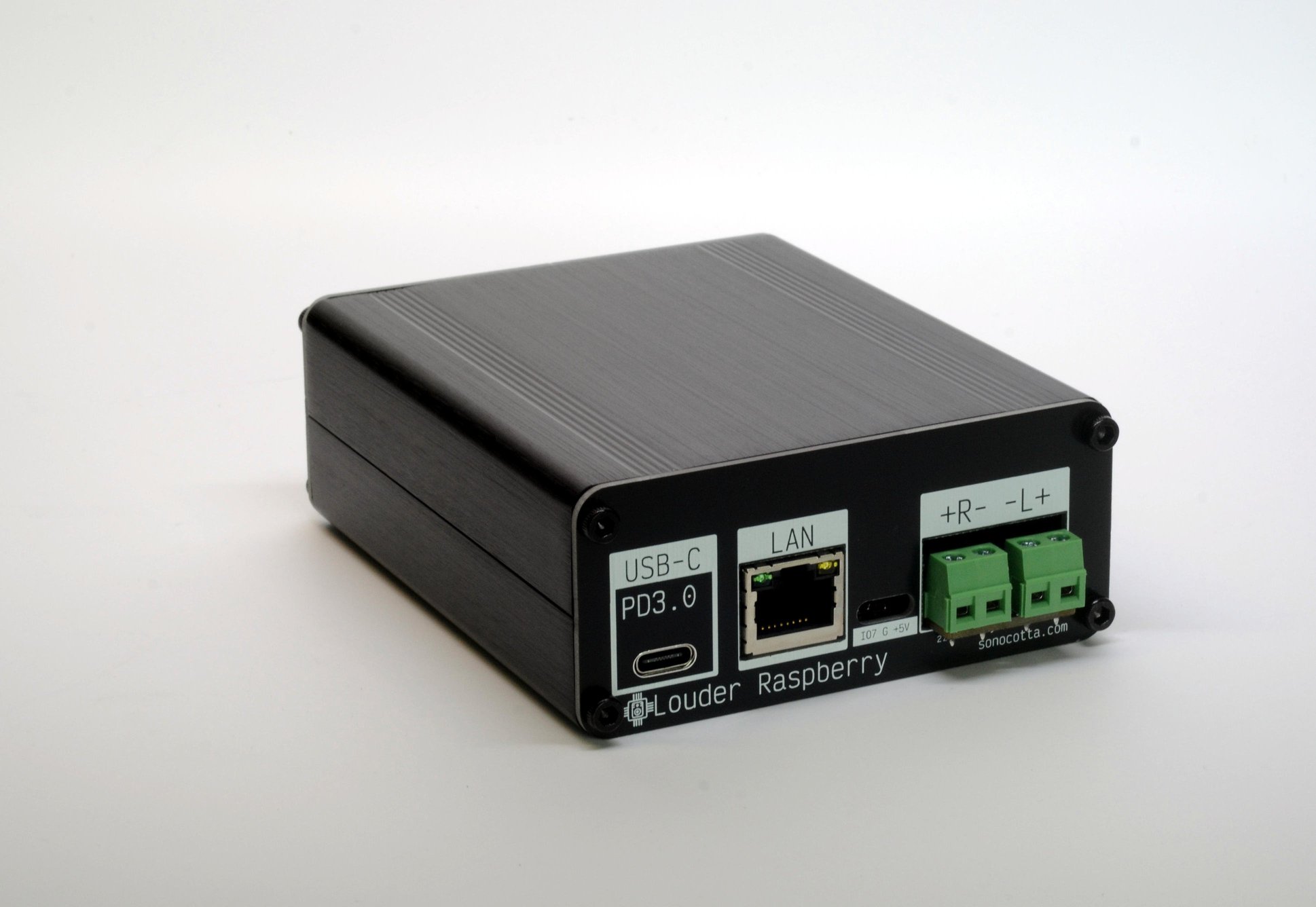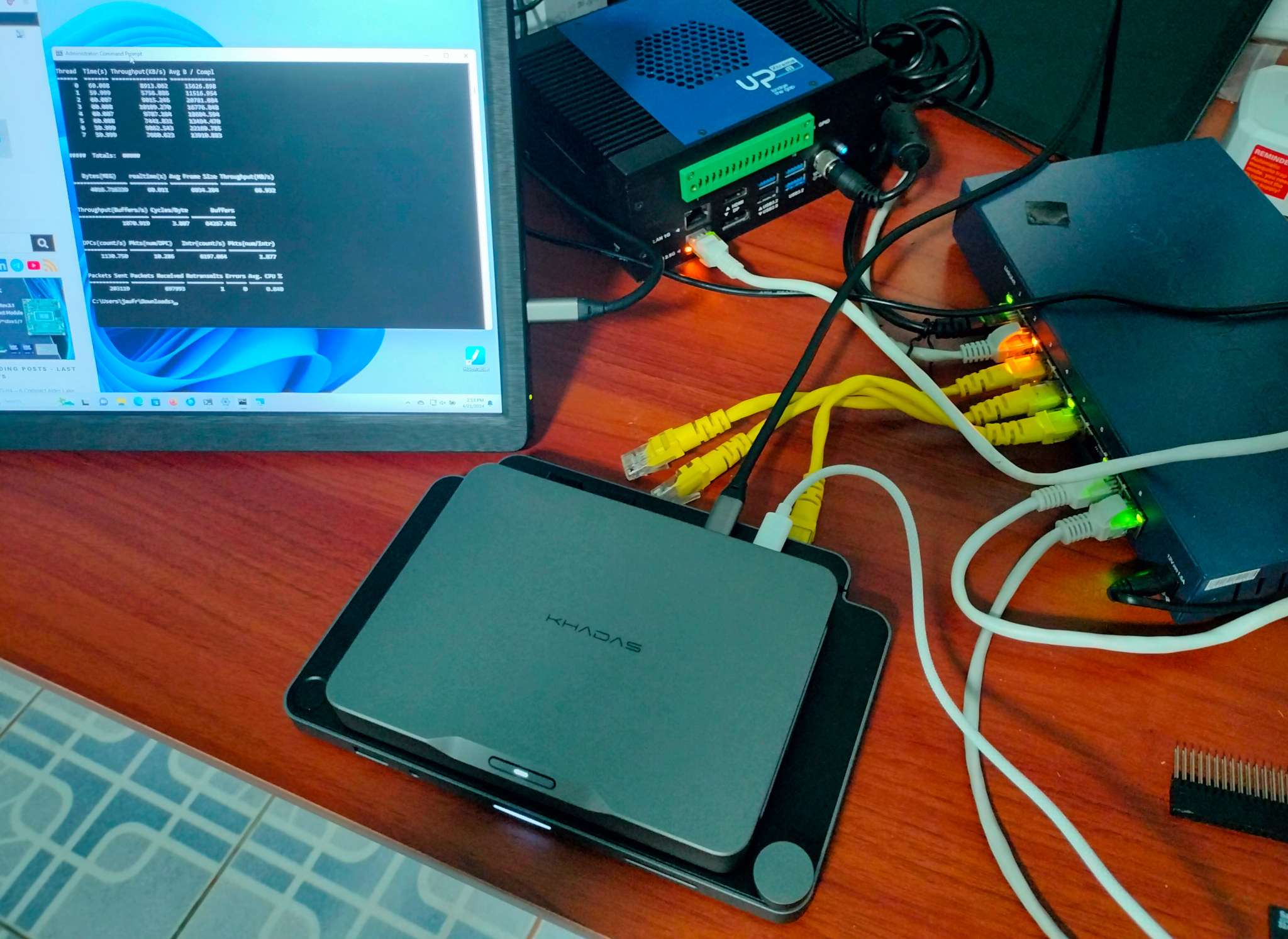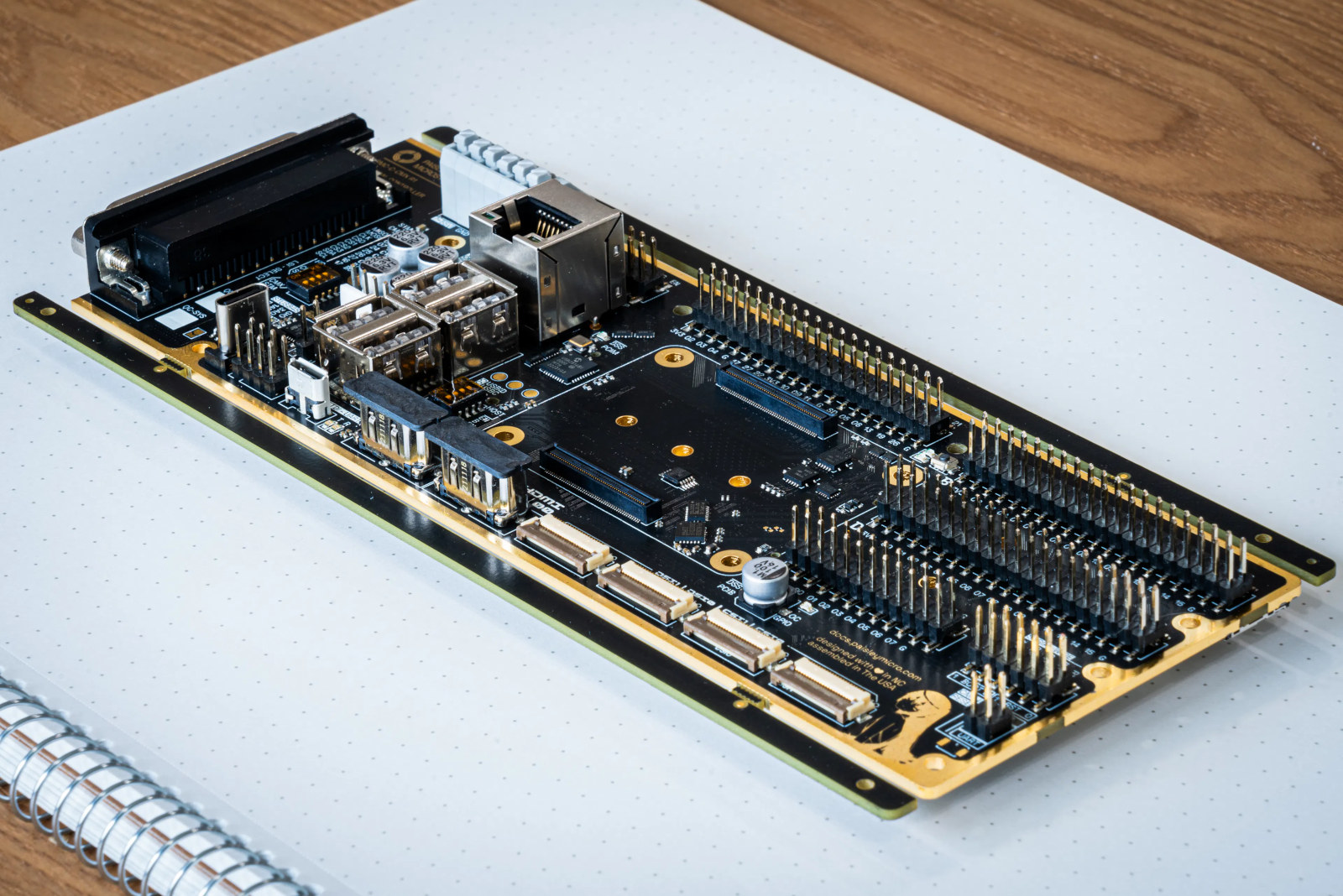Firefly AIBOX-1684X is a compact AI Box based on SOPHON BM1684X octa-core Arm Cortex-53 processor with a 32 TOPS AI accelerator suitable for large language models (LLM) such as Llama 2, Stable Diffusion image generation solution, and traditional CNN and RNN neural network architectures. Firefly had already released several designs based on the SOPHON BM1684X AI processor with the full-featured Firefly EC-A1684XJD4 FD Edge AI computer and the AIO-1684XQ motherboard, but the AIBOX-1684X AI Box offers the same level of performance, just without as many interfaces, in a compact enclosure measuring just 90.6 x 84.4 x 48.5 mm. AIBOX-1684X AI box specifications: SoC – SOPHGO SOPHON BM1684X CPU – Octa-core Arm Cortex-A53 processor @ up to 2.3 GHz TPU – Up to 32TOPS (INT8), 16 TFLOPS (FP16/BF16), 2 TFLOPS (FP32) VPU Up to 32-channel H.265/H.264 1080p25 video decoding Up to 32-channel 1080p25 HD video processing (decoding + AI analysis) Up […]
Raspberry Pi CM4S module gets 2GB, 4GB, and 8GB RAM variants for commercial products
Raspberry Pi has announced three new versions of its Compute Module 4S (CM4S) offering 2GB, 4GB, and 8GB RAM options which is an upgrade from the 1GB variant introduced in 2022. These new modules feature the same Broadcom BCM2711 quad-core Cortex-A72 SoC used in Raspberry Pi 4 and Raspberry Pi CM4 and have a starting price of only $25. The main downside is that the modules can only be purchased in bulk (200-unit boxes) through Raspberry Pi Approved Resellers. Raspberry Pi Compute Module 4S (CM4S) specifications: SoC – Broadcom BCM2711 CPU – Quad-core 64-bit Cortex-A72 processor @ 1.5 GHz GPU – VideoCore VI GPU 3D Graphics: OpenGL ES 3.0 and Vulkan 1.1 Video H.265 (HEVC) (up to 4Kp60 decode) H.264 (up to 1080p60 decode, 1080p30 encode) Memory – 1GB, 2GB, 4GB, and 8GB LPDDR4-3200 SDRAM with ECC Storage – 8GB, 16GB, or 32GB eMMC flash; Option for 0GB eMMC Flash […]
Ronetix launches NXP i.MX93 SoMs in SMARC and OSM-L form factors
Austrian embedded equipment manufacturer, Ronetix, has released two i.MX93 system-on-modules (SoMs): the RNX-iMX93-OSM that follows the Open Standard Module (OSM) form factor, and the RNX-iMX93-SMARC compliant with the SMARC 2.1 (smart mobility architecture) standard. Ronetix i.MX93 SoMs are powered by the NXP i.MX93 processor featuring a 64-bit dual-core Arm Cortex-A55 application processor running at 1.7GHz and a Cortex-M33 core running at 250MHz for low-latency and real-time tasks. The SoC supports up to 2GB LPDDR4 RAM and 512GB eMMC storage, and the integrated Arm Ethos-U65 microNPU offers up to 0.5 TOPS of computing power for machine vision applications and intelligent energy management (IEM). Applicable for industrial automation and IoT, the SoMs also feature two CAN and Ethernet interfaces to aid high-speed data transfer. Other hardware featuring the i.MX93 that we have covered recently include the ADLINK OSM-IMX93, MaaXBoard OSM93, and Ka-Ro Electronics’ QS93. The RNX-iMX93-SMARC system-on-module comes in 82 x 50mm […]
IBASE ISR500 fanless Edge AI computer and digital signage player features MediaTek Genio 510 or 700 SoC
IBASE Technology ISR500 is a fanless digital signage player and Edge AI computer powered by either a MediaTek Genio 510 hexa-core Cortex-A78/A55 processor or Genio 720 octa-core Cortex-A78/A55 SoC with a real-time AI performance up to 3.2 TOPS. The system ships with 4GB RAM and 64GB eMMC flash, features two HDMI video outputs, a gigabit Ethernet port, a few USB ports, a 3.5mm audio jack, a COM port, and an M.2 socket for wireless expansion. IBASE ISR500 specifications: SoC (one or the other) MediaTek Genio 700 (MT8390) Octa-core CPU – Dual-core Cortex-A78 @ 2.2GHz with 256KB L2 cache, hexa-core Cortex-A55 @ 2.0GHz with 128KB L2 cache, shared 2MB L3 cache GPU – Arm Mali-G57 MC3 with support for OpenGL ES 1.1/2.0/3.2, Vulkan 1.0/1.1, OpenCL 2.2 AI accelerator – Tensilica VP6 MediaTek APU 3.0 up to 3.2 TOPS VPU Video Encode – 4Kp30 H.265/H.264 Video Decode – 4Kp75, AV1, VP9, H.265/H.264 […]
BIGTREETECH Pi 2 SBC and CB2 module for 3D printers now feature Rockchip RK3566 SoC with Gigabit Ethernet
BIGTREETECH recently announced the release of the BIGTREETECH Pi 2 SBC and BIGTREETECH CB2 SoM, both powered by the Rockchip RK3566 SoC. These new modules are direct upgrades from the BIGTREETECH Pi v1.2 and BIGTREETECH CB1, which we covered and reviewed in our previous posts. Specially designed for 3D printers, these new modules have a similar form factor to that of a Raspberry Pi and the RPI CM4 module, and come with a set of upgraded features including support for GbE Ethernet, dual-band WiFi, up to 32GB of LPDDR4 RAM, eMMC storage, HDMI, USB, and more. BIGTREETECH Pi 2 Specifications SoC – Rockchip RK3566 CPU – Quad-core Arm Cortex-A55 processor @ 1.8 GHz GPU – Arm Mali G52-2EE GPU with support for OpenGL ES 1.1/2.0/3.2, Vulkan 1.1, OpenCL 2.0 NPU – 0.8 TOPS AI accelerator VPU – 4Kp60 H.265/H.264/VP9 video decoding, 1080p100f H.265/H.264 video encoding System Memory – 2GB LPDDR4 (Customizable – 1GB/2GB/4GB/8GB) […]
Louder Raspberry Pi is an open-source home media center that is powered by Raspberry Pi Zero and a TI TAS5805M DAC
Louder Raspberry Pi is an open-source home media center based on a combination of the Raspberry Pi Zero W or Zero 2 W and the Texas Instruments TAS5805M DAC. It is an audio entertainment platform created by Andriy Malyshenko of Sonocotta, a Polish electronics hobbyist and maker. Louder Raspberry Pi incorporates the computing power of the Raspberry Pi Zero and the Hi-Fi audio processing capabilities of TI’s TAS5805M DAC in a compact, aluminum case. The device delivers up to 25W per channel stereo output and is powered via a 65W+ USB-C PD3.0 adapter. It is “aimed to be paired with medium-to-large speaker systems” and supports both Wi-Fi and Ethernet. The Raspberry Pi board was selected over other lightweight alternatives due to the ease of development it offers. The Raspberry Pi Zero board is small enough to make for an overall compact device and powerful enough to handle the demands of […]
Testing ntttcp as an iperf3 alternative in Windows 11 (and Linux)
ntttcp (Windows NT Test TCP) is a network benchmarking utility similar to iperf3 that works in both Windows and Linux written and recommended by Microsoft over iperf3, so we’ll test the alternative in this mini review. iperf3 is a utility of choice for our reviews of single board computers and mini PCs running either Windows or Linux, but we’ve noticed that while Ethernet (up to 2.5GbE) usually performs just as well in Windows and Linux, WiFi is generally much faster in Ubuntu 22.04 than in Windows 11. So when XDA developers noticed a post by Microsoft saying iperf3 should not be used on Windows 11, it caught my attention. Microsoft explains iperf3 should not be used in Windows for three main reasons: The maintainer of iperf – ESnet (Energy Sciences Network) – says “iperf3 is not officially supported on Windows, but iperf2 is. We recommend you use iperf2. Some people […]
Industrial control board combines Raspberry Pi CM4/CM5 with STM32H7 MCU for real-time control
Paisley Microsystems PMC-C-CMX is a DIN-Rail mountable industrial control board taking a Raspberry Pi CM4 or CM5 (once launched), equipped with an STM32H7 Arm Cortex-M7 microcontroller for real-time control. The carrier board integrates features such as wide voltage input (7 to 55V DC), an M.2 PCIe Gen 3 Key-B and Key-M sockets with cellular option, gigabit Ethernet, HDMI and MIPI DSI display interfaces, twp MIPI CSI camera interfaces, and several headers and connectors with RS485, GPIO, I2S, SPI, and more connected to either the Raspberry Pi Compute Module or the STM32H7 MCU. Paisley Microsystems PMC-C-CMX specifications: Supported system-on-modules – Raspberry Pi CM4 or upcoming Raspberry Pi CM5 MCU – STMicro STM32H7B0 Arm Cortex-M7 microcontroller up to 280 MHz with 128KB flash, 1.4MB SRAM MCU <-> CM communication – UART and/or SPI Video Output 2x HDMI ports up to 4Kp60 2x MIPI DSI connectors Camera input – 2x MIPI CSI connectors […]


